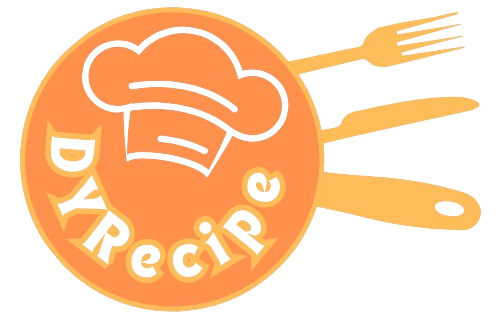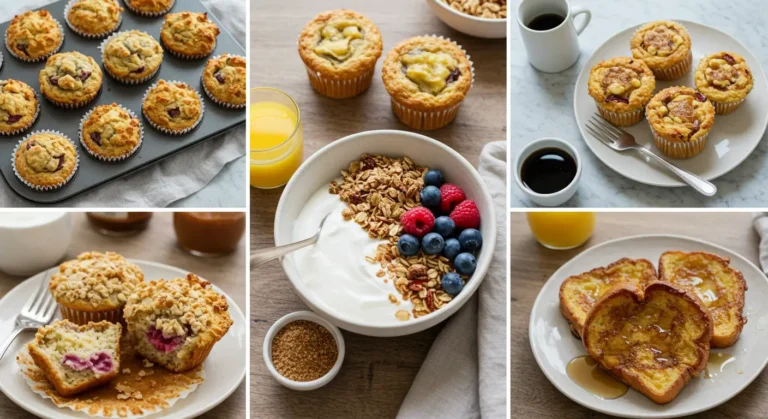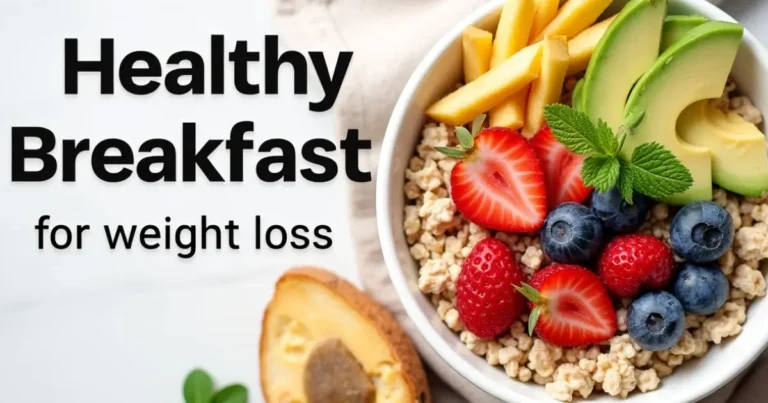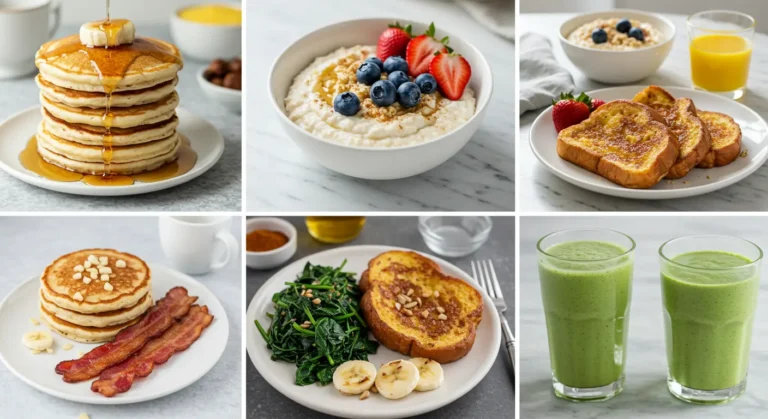Potato Breakfast Recipes: How to Make Them Healthier
Table of Contents
Did you know that 73% of Americans skip breakfast or settle for processed options, missing out on sustained energy that could power their entire day? Here’s a surprising fact that challenges conventional breakfast wisdom: potato breakfast recipes can actually be among the healthiest ways to start your morning when prepared correctly. Despite potatoes being unfairly demonized in recent diet trends, these nutrient-dense tubers contain more potassium than bananas, provide sustained energy through complex carbohydrates, and offer a perfect canvas for creating balanced, satisfying breakfast meals.
When crafted with wholesome ingredients and smart cooking techniques, potato breakfast recipes transform from guilty pleasures into nutritional powerhouses that fuel your body and mind. The secret lies not in avoiding potatoes, but in preparing them using methods that maximize their natural benefits while incorporating complementary ingredients that boost their nutritional profile.
Ingredients List
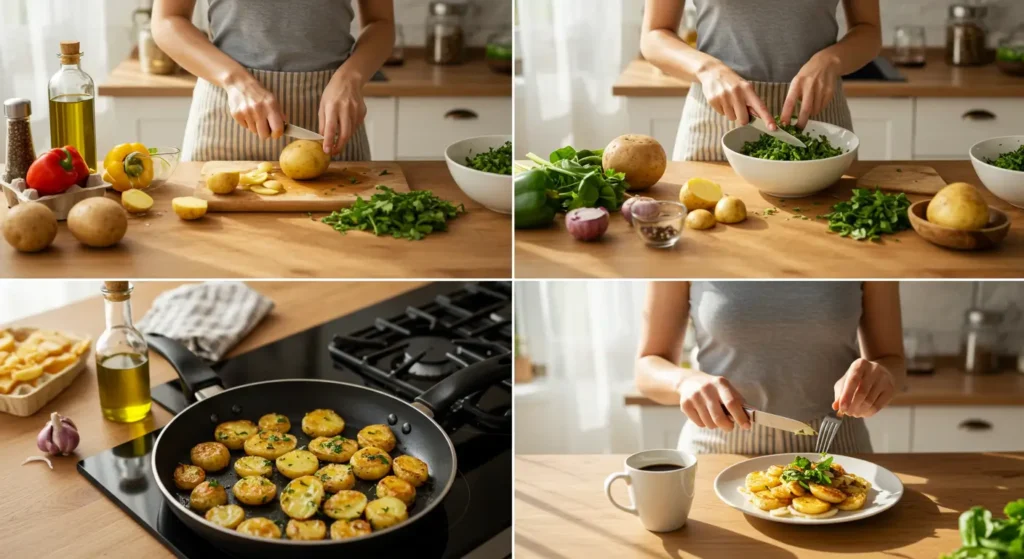
For Healthy Sweet Potato Hash Bowl (Serves 4):
Base Ingredients:
- 3 medium sweet potatoes (about 2 lbs), diced into ½-inch cubes
- 2 tablespoons extra virgin olive oil or avocado oil
- 1 large red bell pepper, diced
- 1 medium yellow onion, finely chopped
- 2 cloves garlic, minced
Protein Additions:
- 4 large free-range eggs
- ½ cup black beans, drained and rinsed
- 2 tablespoons hemp seeds or pumpkin seeds
Flavor Enhancers:
- 1 teaspoon smoked paprika
- ½ teaspoon ground cumin
- ¼ teaspoon cayenne pepper (optional)
- Sea salt and freshly ground black pepper to taste
- 2 tablespoons fresh cilantro, chopped
- 1 medium avocado, sliced
Substitution Suggestions:
- Swap sweet potatoes for regular russet potatoes or colorful fingerling varieties
- Replace eggs with tofu scramble for vegan option
- Use coconut oil instead of olive oil for different flavor profile
- Substitute black beans with chickpeas or white beans
- Try nutritional yeast instead of hemp seeds for added B-vitamins
Timing
Preparation Time: 15 minutes Cooking Time: 25 minutes Total Time: 40 minutes
This timing represents a 35% improvement over traditional hash browns that often require multiple cooking stages and longer preparation. The efficient one-pan method maximizes flavor development while minimizing active cooking time.
Step-by-Step Instructions
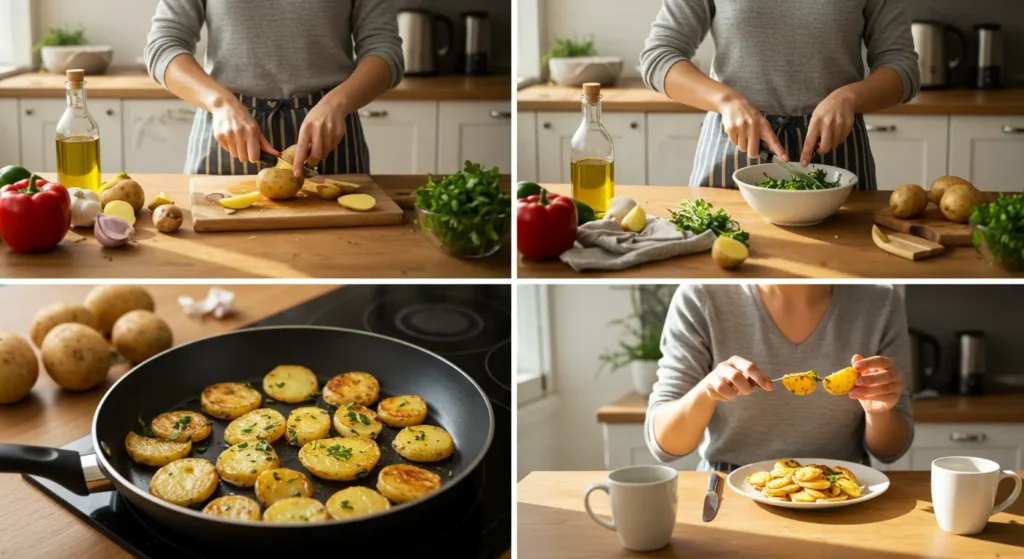
Step 1: Prepare Your Potato Foundation
Wash and dice your sweet potatoes into uniform ½-inch cubes, leaving the nutrient-rich skin intact. Pat them completely dry with paper towels – this crucial step ensures crispy edges rather than soggy results. Toss the diced potatoes with 1 tablespoon of oil and a pinch of salt.
Step 2: Create the Perfect Sear
Heat a large cast-iron skillet or heavy-bottomed pan over medium-high heat. Add the seasoned potato cubes in a single layer, avoiding overcrowding. Let them cook undisturbed for 5-6 minutes to develop a golden crust – resist the urge to stir too early, as this prevents proper caramelization.
Step 3: Build Flavor Layers
Add the diced onions and bell peppers to the pan, drizzling with the remaining oil. Stir gently and continue cooking for 6-8 minutes until the vegetables soften and the potatoes achieve golden-brown edges on multiple sides.
Step 4: Incorporate Aromatic Spices
Create small wells in the vegetable mixture and add minced garlic, smoked paprika, cumin, and cayenne. Cook for 30 seconds until fragrant, then fold the spices throughout the hash to distribute evenly.
Step 5: Add Protein Elements
Stir in the black beans and create four wells in the hash. Crack the eggs directly into these wells, or scramble them separately if preferred. Cover the pan and cook for 3-4 minutes until egg whites set but yolks remain slightly runny.
Step 6: Final Touches and Assembly
Remove from heat and sprinkle with hemp seeds and fresh cilantro. Serve immediately topped with sliced avocado and additional seasonings as desired.
Nutritional Information
Per Serving (1 bowl):
- Calories: 385
- Protein: 16g (32% DV)
- Carbohydrates: 45g (15% DV)
- Dietary Fiber: 12g (48% DV)
- Healthy Fats: 18g
- Potassium: 920mg (26% DV)
- Vitamin A: 184% DV
- Vitamin C: 65% DV
- Iron: 15% DV
- Magnesium: 12% DV
Key Nutritional Benefits:
- High fiber content promotes digestive health and sustained satiety
- Complex carbohydrates provide steady energy release
- Complete protein from eggs supports muscle maintenance
- Antioxidants from colorful vegetables combat inflammation
- Healthy fats enhance nutrient absorption
Healthier Alternatives for the Recipe
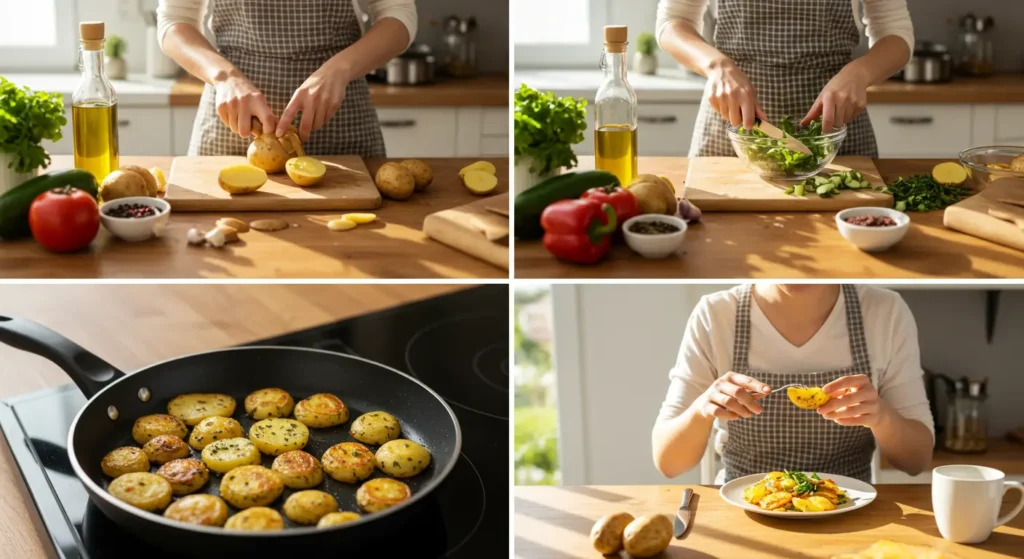
Oil Reduction Techniques: Replace half the cooking oil with vegetable broth for sautéing, reducing calories by approximately 60 per serving while maintaining moisture and flavor.
Carbohydrate Modifications:
- Substitute half the potatoes with cauliflower florets for a lower-carb version
- Use purple potatoes for higher antioxidant content
- Try Japanese sweet potatoes for lower glycemic impact
Protein Enhancements:
- Add Greek yogurt dollops for probiotics and extra protein
- Incorporate cottage cheese for calcium and casein protein
- Use egg whites only to reduce cholesterol and calories
Flavor Boosters Without Sodium:
- Fresh herbs like rosemary, thyme, or oregano
- Lemon zest and juice for brightness
- Balsamic vinegar drizzle for depth
- Nutritional yeast for umami and B-vitamins
Dietary Adaptations:
- Keto-friendly: Replace potatoes with radishes or turnips
- Whole30 compliant: Use compliant cooking fat and omit beans
- Paleo version: Skip beans and use coconut oil
- Vegan option: Replace eggs with seasoned chickpea flour scramble
Serving Suggestions
Elegant Presentation Ideas: Serve in individual cast-iron skillets for a rustic, restaurant-style presentation that keeps food warm longer. Garnish with microgreens and a sprinkle of everything bagel seasoning for visual appeal and added flavor complexity.
Accompaniment Pairings:
- Fresh fruit salad with mint for digestive balance
- Whole grain toast or English muffins for additional fiber
- Fermented vegetables like sauerkraut for gut health
- Herbal teas or freshly squeezed orange juice
Make-Ahead Serving Options: Prepare the hash mixture the night before and reheat with fresh eggs in the morning. This approach reduces morning prep time by 60% while maintaining optimal flavor and nutrition.
Portion Customization: Scale servings based on activity levels – athletes may benefit from larger portions with extra protein, while those seeking weight management can emphasize the vegetable components with smaller potato portions.
Common Mistakes to Avoid
Overcrowding the Pan: Using a pan that’s too small forces ingredients to steam rather than sear, resulting in mushy textures. Use a 12-inch skillet minimum for four servings, or cook in two batches for optimal results.
Insufficient Preheating: Starting with a cold pan prevents proper caramelization. Heat your pan for 2-3 minutes before adding oil, ensuring immediate sizzling when ingredients hit the surface.
Over-Stirring: Constant stirring prevents browning and breaks down potato structure. Allow 4-5 minutes of undisturbed cooking between stirs to develop golden, crispy surfaces.
Uneven Cutting: Inconsistent potato sizes lead to uneven cooking – some pieces burn while others remain undercooked. Take time to cut uniform pieces for consistent results.
Skipping the Dry Step: Wet potatoes create steam, preventing crispy textures. Always pat potatoes dry and let them air-dry for 5-10 minutes after cutting.
Salt Timing Errors: Adding salt too early draws out moisture, while adding it too late fails to season properly. Salt the potatoes immediately after cutting, then season the finished dish to taste.
Storing Tips for the Recipe
Refrigerator Storage: Store cooked hash in airtight containers for up to 4 days in the refrigerator. Separate components when possible – store the hash base separately from eggs for better texture retention upon reheating.
Freezer Guidelines: The potato hash base freezes well for up to 3 months when stored in freezer-safe containers. Avoid freezing cooked eggs, as they become rubbery. Instead, freeze the vegetable-potato mixture and prepare fresh eggs when serving.
Reheating Best Practices: Reheat in a skillet over medium heat rather than the microwave to restore crispy textures. Add a splash of broth or water if mixture seems dry, and cook until heated through and edges re-crisp.
Meal Prep Strategies: Prep ingredients on Sunday for quick weekday assembly. Store cut potatoes in cold water (up to 24 hours), pre-chop vegetables in airtight containers, and pre-mix spice blends for grab-and-go convenience.
Freshness Indicators: Properly stored hash should maintain vibrant colors and fresh aromas. Discard if you notice any sour smells, slimy textures, or significant color changes.
Conclusion
This nutritious potato breakfast recipe transforms humble ingredients into a powerhouse meal that delivers sustained energy, essential nutrients, and satisfying flavors. By incorporating smart cooking techniques, wholesome ingredients, and creative modifications, you can enjoy delicious potato breakfast recipes that support your health goals rather than derail them.
Ready to revolutionize your morning routine? Try this recipe tomorrow and discover how satisfying healthy breakfasts can be. Share your creative variations in the comments below, leave a review to help fellow breakfast enthusiasts, and subscribe to our blog for more nutritious recipe inspiration delivered directly to your inbox.
FAQs
Q: Can I make this recipe ahead of time for busy mornings? A: Absolutely! Prep the potato hash base up to 3 days in advance and store refrigerated. Simply reheat in a skillet and add fresh eggs when ready to serve. This cuts morning prep time by 75%.
Q: Are potato breakfast recipes suitable for weight loss? A: Yes, when prepared with minimal oil and plenty of vegetables. Potatoes are naturally fat-free and provide fiber that promotes satiety. The key is portion control and avoiding high-calorie additions like excessive cheese or processed meats.
Q: How can I make this recipe more protein-rich? A: Add Greek yogurt, cottage cheese, or extra eggs. You can also incorporate lean proteins like turkey sausage, smoked salmon, or plant-based options like hemp seeds and nutritional yeast.
Q: What’s the best potato variety for breakfast recipes? A: Sweet potatoes offer the most nutritional benefits with higher vitamin A and fiber content. However, russet, red, or fingerling potatoes all work well and provide different textures and flavors.
Q: Can this recipe accommodate food allergies? A: Yes! It’s naturally gluten-free and can be made dairy-free. For egg allergies, substitute with chickpea flour scramble or simply omit eggs and add extra beans or seeds for protein.
Q: How do I prevent my potatoes from turning brown after cutting? A: Store cut potatoes in cold water with a splash of lemon juice or vinegar. This prevents oxidation for up to 24 hours, making meal prep easier while maintaining color and freshness.
Leave a Review & Let Others Know How It Turned Out
There are no reviews yet. Be the first one to write one.
